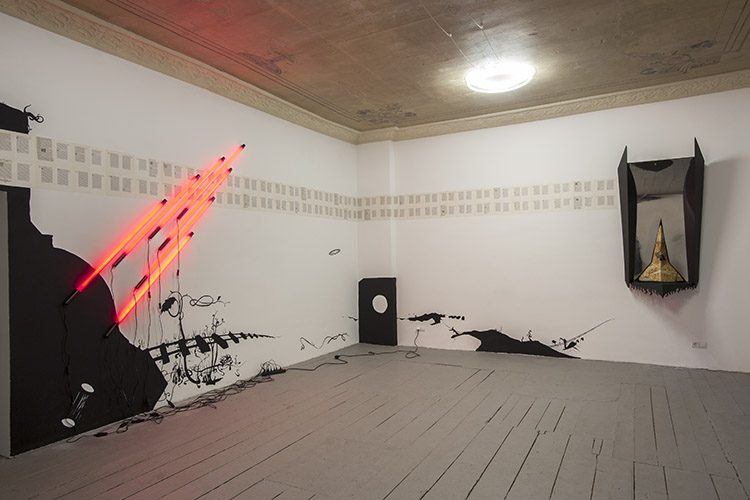Artists: David Mabb & Henrik
Schrat
Text: Maja Ciric
Sharing a common topic might be one possible way of belonging to the
global, but not globalized art world – the more universal it is,
the more it can stimulate a dialog, that would enlarge any artistic horizon
at stake. Having that in mind David Mabb and Henrik Schrat have responded
to each other’s work by intertwining their respective interests
in utopias and dystopias through the exhibition that is based on a collaborative
atmosphere of exchange, manifested in the works that act as a totality,
rather than a sum of its parts.
Although utopia might sound as a universal topic, one possible categorization
of utopias distinguishes between the utopian imaginary, utopian avant-gardes,
therapeutic utopias, critical utopias and utopia in relation to its (im)possibilities.
(Utopias, Documents on Contemporary Art, Richarde Noble (ed.)
However, what’s more important than understanding these specifications
are at least two universal principles that these different approaches
to utopia share: 1. the dynamic principle manifested in the fact that
utopia when dealt with and spoke about is a journey, rather than a destination;
2. the principle of ambivalence manifested in the fact that a utopian
thinking is a telescope for the nearest nearness . (Ermst Bloch, The Principle
of Hope, (1954-1959.)
The constellation of this exhibitions is a result of a process of filtration
of formal historical manifestations of the utopian thinking. Based on
the principles of dynamism and ambivalence, rather than constructing a
new utopia, this exhibition acts as reference to historical utopias, with
a particular emphasis to Communism of various origin (Utopian Communism,
Avant-garde Communism, "Communism" from 45-89 in Eastern Europe)
and its utopian imaginary. This historical references are used in order
to critically and indirectly examine the nearest nearness through the
means of visual arts. Specifically, the formal reference to the contemporary
(social) purpose of Communism is reexamined, in a way that it resonates
in the specific context of Wedding as in the working class neighborhood.
Practically, in Mabb’s video A Closer Look at the Life and Work
of William Morris with the music by the Der Rote Wedding sound track by
the Commandantes, as well as in the Schrat’s Strugatzki Memorial,
the deconstruction happens from both the relation between different utopian
imaginary and their relation to the local context. The art works are triggers
for the trajectory of utopian thinking by exposing and redefining utopian
references in a new environment.
So, what does this particular exhibition resonate with, briefly? On one
hand it resonates with artistic references to the historical utopian discourses,
but it does so in a context responsive manner - it resonates distantly
with the failed modernism of Wedding and its contemporary manifestations.
By doing so, Mabb and Schrat are not only refreshing the utopian legacy,
but also pushing its trajectory onwards.
